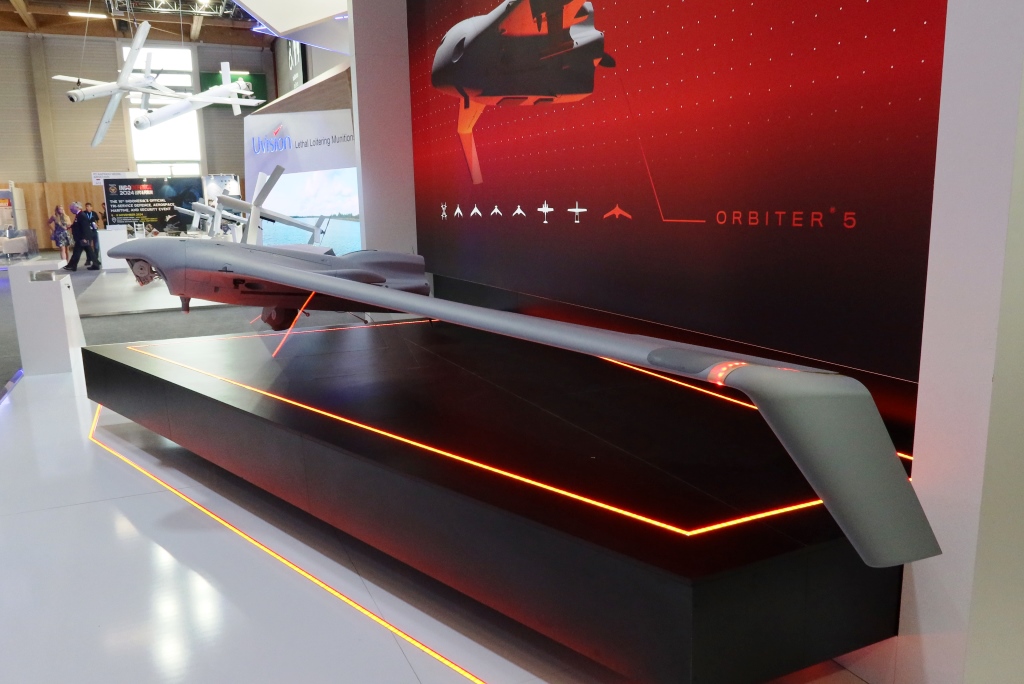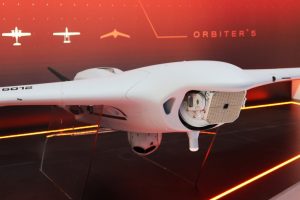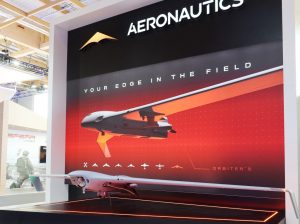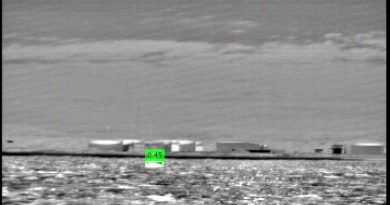
PAS 2023 – MALE performances in TUAS footprint: more on Aeronautics’ Orbiter 5
Unveiled at the Paris Air Show, Aeronautics’ Orbiter 5 packs MALE performances in a Tactical UAS (TUAS) airframe, increasing flexibility for lower echelon formations
Up to its Orbiter 4 Aeronautics followed an evolutionary development path, new products being highly based on the experience and design of the previous one. With its new Orbiter 5 the Israeli company based in Yavne, south of Tel Aviv, the company broke that development path as the new air vehicle is based on a wholly different concept.
When five years ago Aeronautics started designing the new Orbiter, its aim was to challenge 1-2 tonnes platforms with an airframe of less than 100 kg, capable to dramatically reduce footprint not only for the reduced dimensions but also for the capacity to operate without runways.
Close to an all-wing configuration, the wingspan is 6.4 metres the wing being fitted with down looking winglets, the fuselage is only 2 metres long and does not protrude much from the wing root, the Orbiter 5 has a maximum take-off mass of 75 kg, one third of which is represented by the payload. The airframe is quickly assembled at the launch site using only one tool. Recovery in ensured by parachute.

This means that beside the optronic gimbal, which includes day and night sensors as well as a laser pointer/rangefinder/designator, the Orbiter 5 can carry a further payload with a mass under 10 kg. In Paris the airframe was exhibited without the front radome, which allowed to see the antenna of the Bird Aerosystems µMPR Micro Maritime Patrol Radar, the Ka-band radar with a 30 km detection range which weight is under 7 kg. Other payloads such as Communications Intelligence, Electronic Intelligence and Electronic Warfare can also be installed. Artificial intelligence algorithms are used to optimise operations.
This adds a considerable capacity when flying missions over the sea, although Aeronautics underlines that 90% of the missions are conducted using the electro-optical payload which is provided by Controp, the company being owned by Aeronautics and Rafael, Rafael being itself owning part of Aeronautics.
It is worthwhile note here that by September Aeronautics will be fully owned by Rafael; in September 2019 ago the company was acquired by Rafael and Mr. Stolero, the 50/50 deal including a clause saying that after four years one of the investor might decide to divest its shares. This is what is happening and since next September Rafael will gain full control over Aeronautics.
That said, another key element of the Orbiter 5 is the data link, which is provided by Commtact, another subsidiary of Aeronautics. This exploits 256 channels frequency hopping technique to counter possible jamming, data link range in line of sight being 150 km.

All electronics on board requires a considerable amount of power. Aeronautics asked its Italian subsidiary Zanzottera, a specialist in engines for UAS, to purposely develop for the Orbiter 5 the 11 hp dual-ignition engine that driver the two-blade pushing propeller, ensuring a maximum speed of 70 knots. However the key issue is the electric power generated, which goes up to 600 W. The Orbiter 5 endurance is up to 25 hours, ceiling being 18,000 ft; Aeronautics considers that installing a SATCOM data link is possible, and this would definitely increase the operational range of the system.
For safety issues, a dual avionics is installed which provides redundancy, while navigation is ensured even in GNSS-denied areas, the whole system being inherently cyber-protected.
As previously said, take-off is carried out using a mobile catapult, launch rate is high therefore multiple Orbiter 5 can be quickly deployed before moving away from the launch site.
The Orbiter 5 employs the same Ground Control Station of previous Orbiters, multi-platform software being used to ensure its compatibility with all airframes, upgrades being automatically adopted on all elements of the Aeronautics ecosystem. This allows reducing not only logistic issues but also training, as operators will exploit the family feeling that makes it easier to transit from one UAS to the other.
Although it was revealed only a few days ago, the Orbiter 5 is already being delivered to two major customers who filed significant contracts, but whose name remain undisclosed. Demonstrations have been carried out to a number of potential customers, a major demo being planned before year-end.
Aeronautics is working on the development roadmap of its new UAS, vertical take-off and landing being for example one of the upgrades under consideration, which would allow an even greater flexibility and reduced logistic footprint, permitting deployment without using the catapult.
To support its increasing business Aeronautics will soon move into new premises that will host the around 500 employees. The company management underlined how the young age of its workforce and the fact that many of them are UAS operators in the Israeli Defence Forces reserve is key to maintain the high ratio of innovation, highlighting that when a new Orbiter appears, this does not replace the previous models but add new capacities. EDR On-Line understood that new development programmes are in process at the company, therefore the Orbiter 5 is far from being the last member of the family.
Photos by P. Valpolini


